Torch-er Test: 5 ways to free stuck bolts
A while back, a friend expressed frustration to me about a security Torx bolt inside the steering column of his vintage Ford. He knew there was red Loctite holding the bolt in place, so getting it out would require heat. A heat gun would be his weapon of choice. “That’s never going to work,” I thought, but also trusted that he knew what he was doing.
His plan ended up failing, mostly due to other variables, but it led to an interesting question: How could we test the efficacy of various popular methods for heating parts in the garage?
We both had our opinions, so our approach had to be scientific, or at least quasi-scientific. Being married to a real-life scientist (I only play one on the internet), I consulted my wife and spend an evening designing a repeatable and measurable test. The goal was to not only to measure the effectiveness of popular heating strategies across a few applications, but also to see if unconventional methods—like my friend’s heat gun approach—might be actually useful in certain situations.
The test
I grabbed an old trailer axle and lopped off the end. This chunk of 1/2″ steel with some tube welded was a reasonable stand-in for a car part, replicating the heat sink (absorption of heat by a piece of metal away from another area) that often plays out in multi-piece components. I then drilled a hole, threaded it, and put in a new bolt with a couple spacers to ensure the bolt had some stretch and tension.
Repeatability is a core tenet of any test. In each run, the bolt was torqued to 50 foot pounds with a dab of red Loctite on the threads and then left to cure for 10 hours—not a perfect duplication of a corroded fastener or something that has been torqued down for decades but a fair baseline for the methods we tested.
To keep the breaking-loose torque on the fastener consistent, I used a jack handle and a weight hung on the end—in this case a sledgehammer and receiver hitch tube. This ensured that there was no additional force acting on the bolt and effectively isolated the variables to what we were testing: the heat breaking down the Loctite. Each experiment occurred in my garage, at a room temperature of 50 degrees Fahrenheit.
Each heat source was applied to one side of the steel plate surrounding the bolt until the bolt broke free and the weight dropped. The chief data point we were recording was time elapsed, but for the sake of more data (and an interesting talking point), I also measured the temperature of the steel plate and bolt right after each the bolt broke free, using an infrared thermometer.
The heat sources
MAP-Pro
The yellow tanks you find at the hardware store are no longer MAPP gas like they once were. Now those tanks are MAP-Pro, which replaces the blend of methylacetylene, propadiene, and propane molecules that makes up MAPP for a gas that only contains propylene and propane. MAPP was discontinued in 2008, which is unfortunate for garage dwellers like you and I because true MAPP gas burned at 5300 degrees Fahrenheit; MAP-Pro burns at 3730 degrees.
Propane
This one should be familiar, as it’s the substance many of us rely on for home heating and cooking. Morgan even used propane for engine fuel at one point! It comes blue tanks at the store, usually right next to the MAP Pro bottles on the shelf. Propane is readily available in many different storage forms, though, and it’s suitable for multitude of tasks. It’s very often employed for soldering or sweating copper pipes in plumbing applications. Burning slightly cooler than MAP-Pro at 3600 degrees, propane is common in a lot of home garages.
Butane kitchen torch
Butane is best known for its use in lighters and other small utility-type torches, such as the kitchen torch we used in this experiment. Butane carries the same potential energy as propane, so burned in the same volume and efficiency it should produce similar results. However, this kitchen torch is much smaller than the ones we used with MAP-Pro and propane, despite the more focused flame. I was particularly curious about how this one would work out, because I’ve personally often wondered if it would come in handy for gently heating delicate parts with a greater demand for accuracy.
Heat gun
Using electric coils and a fan, a heat gun uses resistance to create heat and directed airflow to apply it to your chosen material. Adjustability for temperature and fan speed is nice, but the imprecise nature of how the heat is distributed can sometimes be an issue. Working under a dashboard or on something with plastic components might require using a heat shield to keep hot air from unintentionally affecting sensitive components. For things like heat shrink tubing or softening rubber hoses or lines, however, a heat gun’s soft and variable heat is tough to beat.
Oxyacetylene torch
The beast of the bunch. Twin tanks, hot enough to cut plate steel when properly utilized. The old saying about a stuck fastener that “can’t be tight if it’s liquid” stems from oxyacetylene heat. By far, use of this tool requires the most skill and attention of any torch we’ve discussed thus far. For that reason it rarely appears in DIYer hands. Flame temperatures can reach 6300 degrees and, combined with a rosebud or large welding tip, can put a lot of heat into a workpiece very quickly. This ability can help keep heat localized when used properly, or, when misused, can cause major damage. Add in the ability to use this torch for welding and brazing of materials and it’s easy to see why these setups are popular for more than just slow-motion shots of people using a striker and lighting the flame.
The results!

Consider this your disclaimer: As much as I tried to remove variables from this test, some remained. Take a second to study the chart above.
So, are results what you expected? If so, keep in mind that reinforcing knowledge is still a kind of knowledge gained. An interesting note, too: I used a “0” tip for the oxyacetylene torch, which is a relatively small welding tip. It still pumped enough heat into the steel plate to soften the Loctite faster than anything else. Unfortunately I didn’t have the time to reset the test and try again with a rosebud or larger tip to see if it would work even faster. I suspect it would.
The big takeaway from my perspective: My friend was actually right, at least in a sense.
The heat gun did loosen the Loctite, but the time required and lack of localized heat application makes for a questionable use case in the context of breaking bolts free. In a relatively fragile environment, like under a dashboard, I would be worried about the amount of hot air being pushed in the vicinity of wiring looms or delicate sensors. It would likely still be best to shield or otherwise protect items, even from “only” 1000 degrees that a heat gun can produce. Sometimes, counterintuitively, more heat for a shorter time can save not only time but also materials.
There is a right tool for every job, and sometimes we don’t have it. It happens. I am just happy to know that all of these are legitimate options in a pinch. Pretty sweet, actually.
Is there something else from the garage you would like to see tested in this type of manner? Leave it as a comment below and we’ll see if we can devise a test and share the results. Who doesn’t love learning?
***
Check out the Hagerty Media homepage so you don’t miss a single story, or better yet, bookmark it. To get our best stories delivered right to your inbox, subscribe to our newsletters.


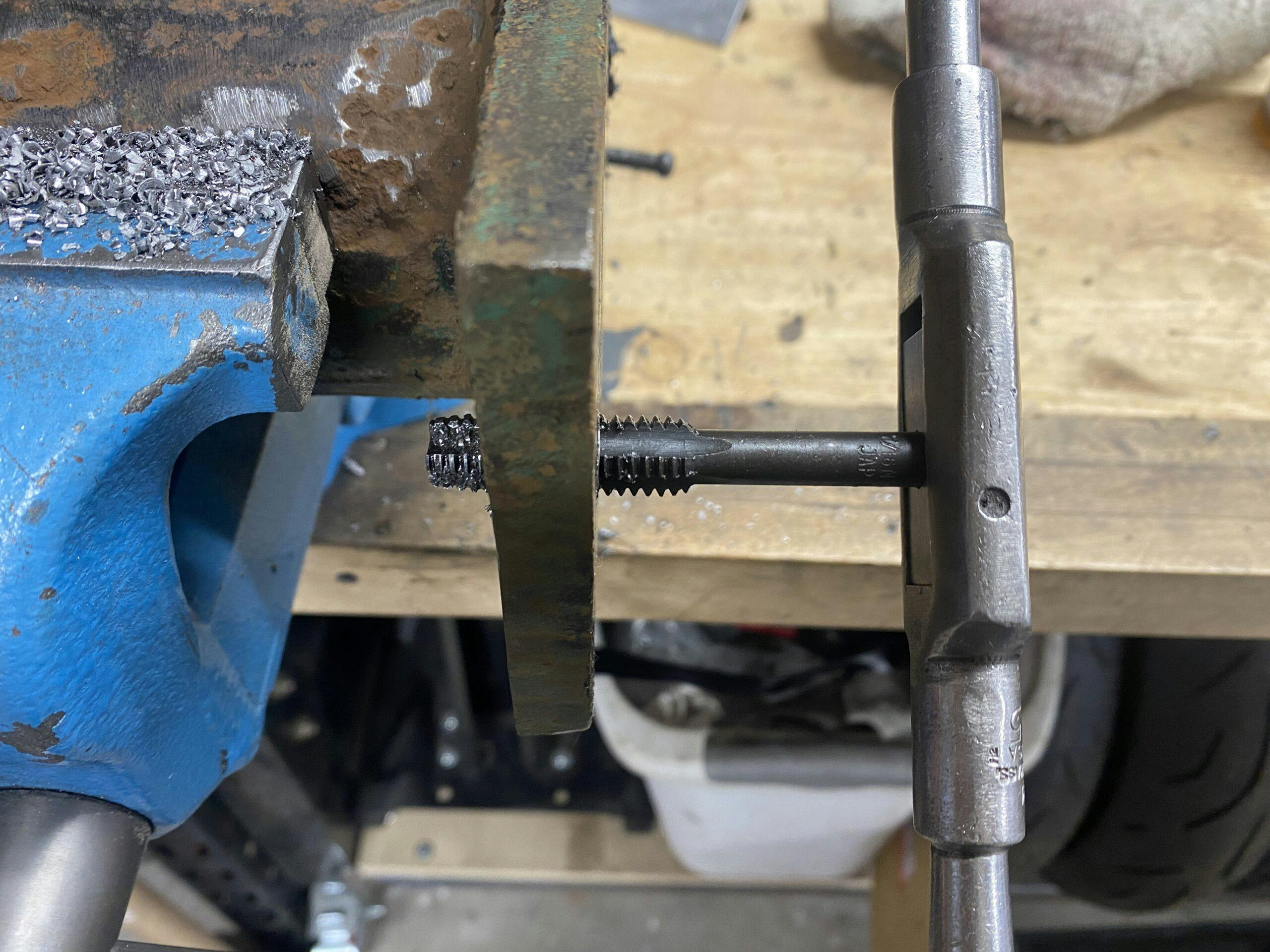
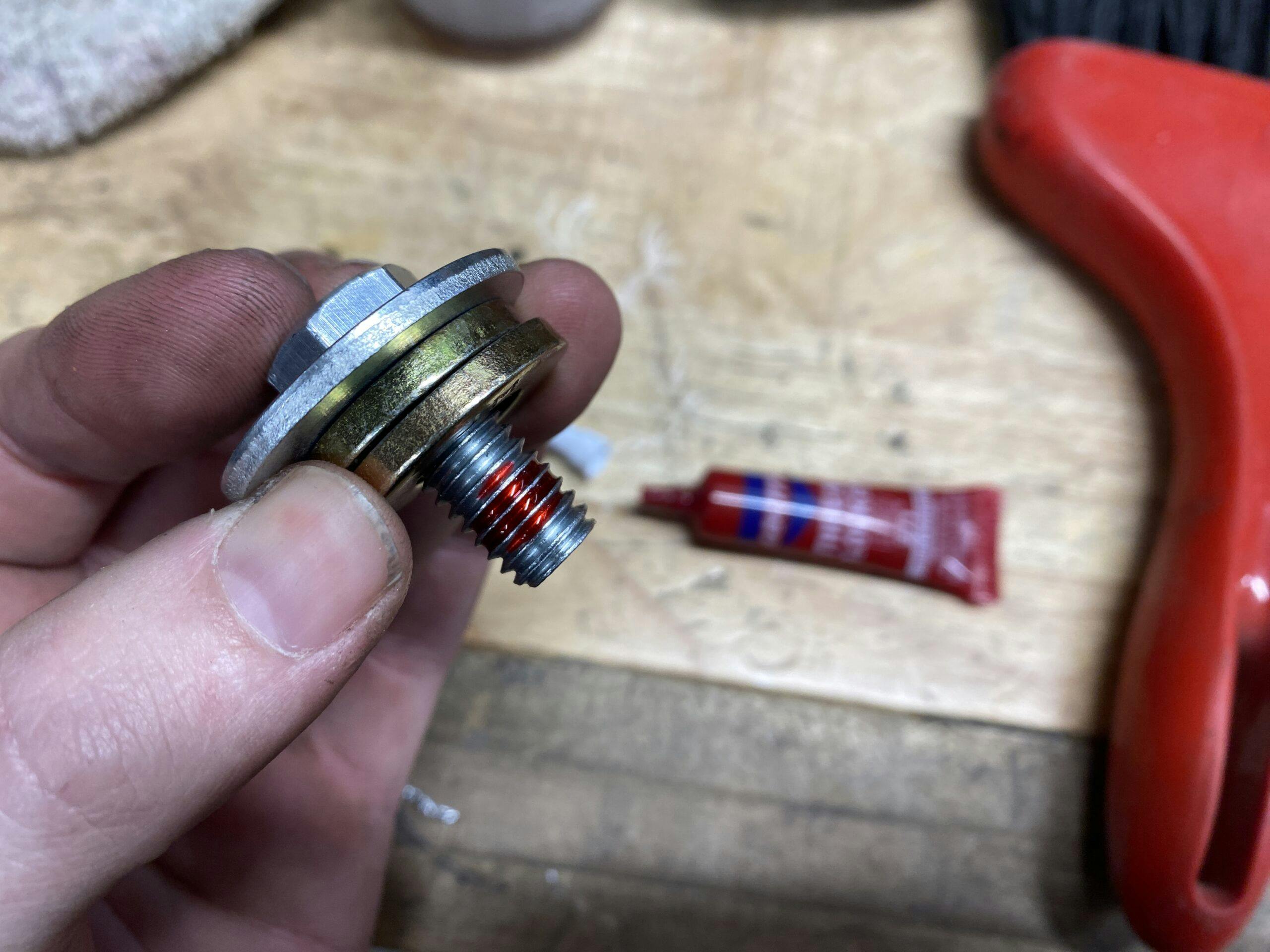
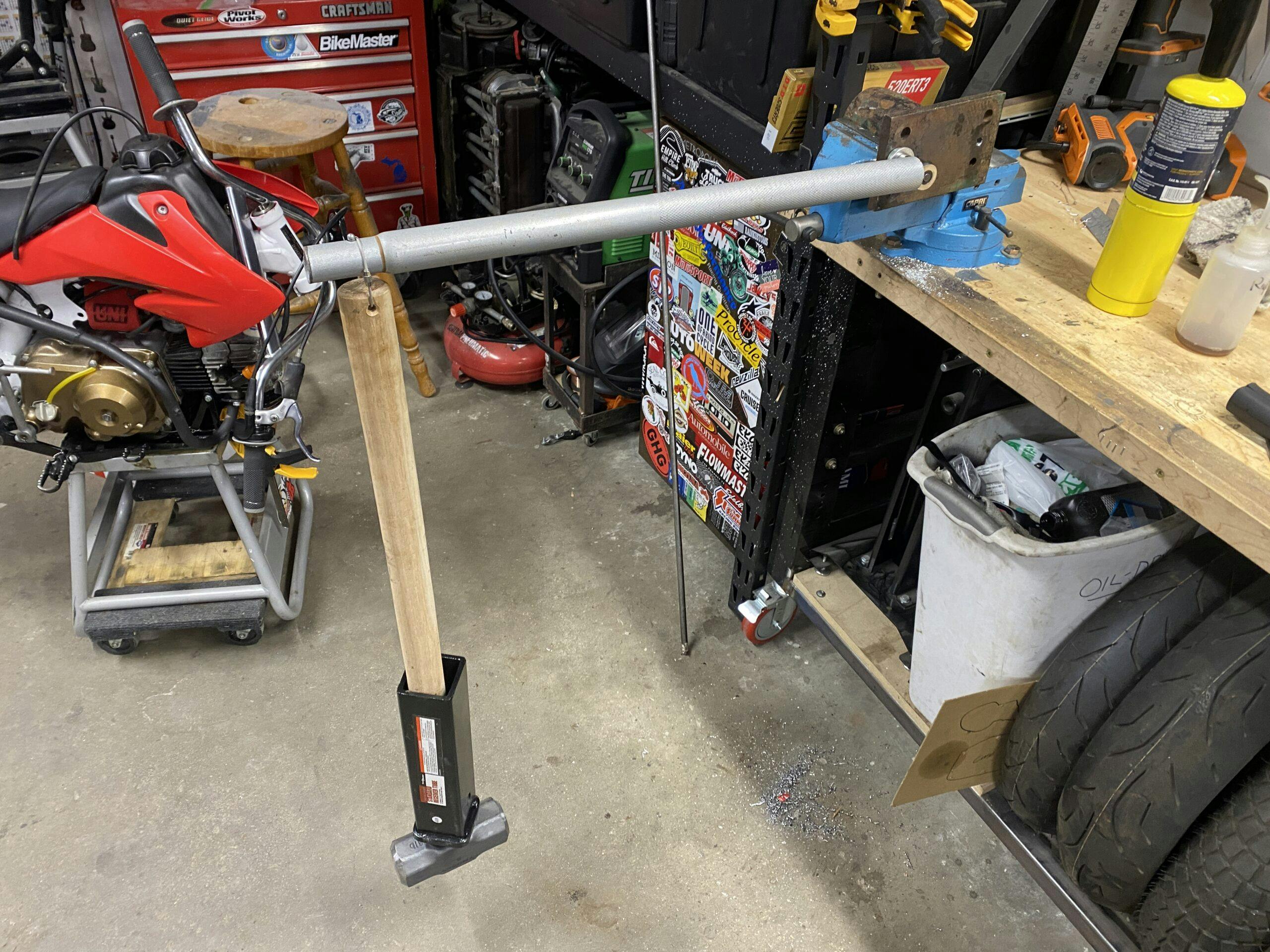
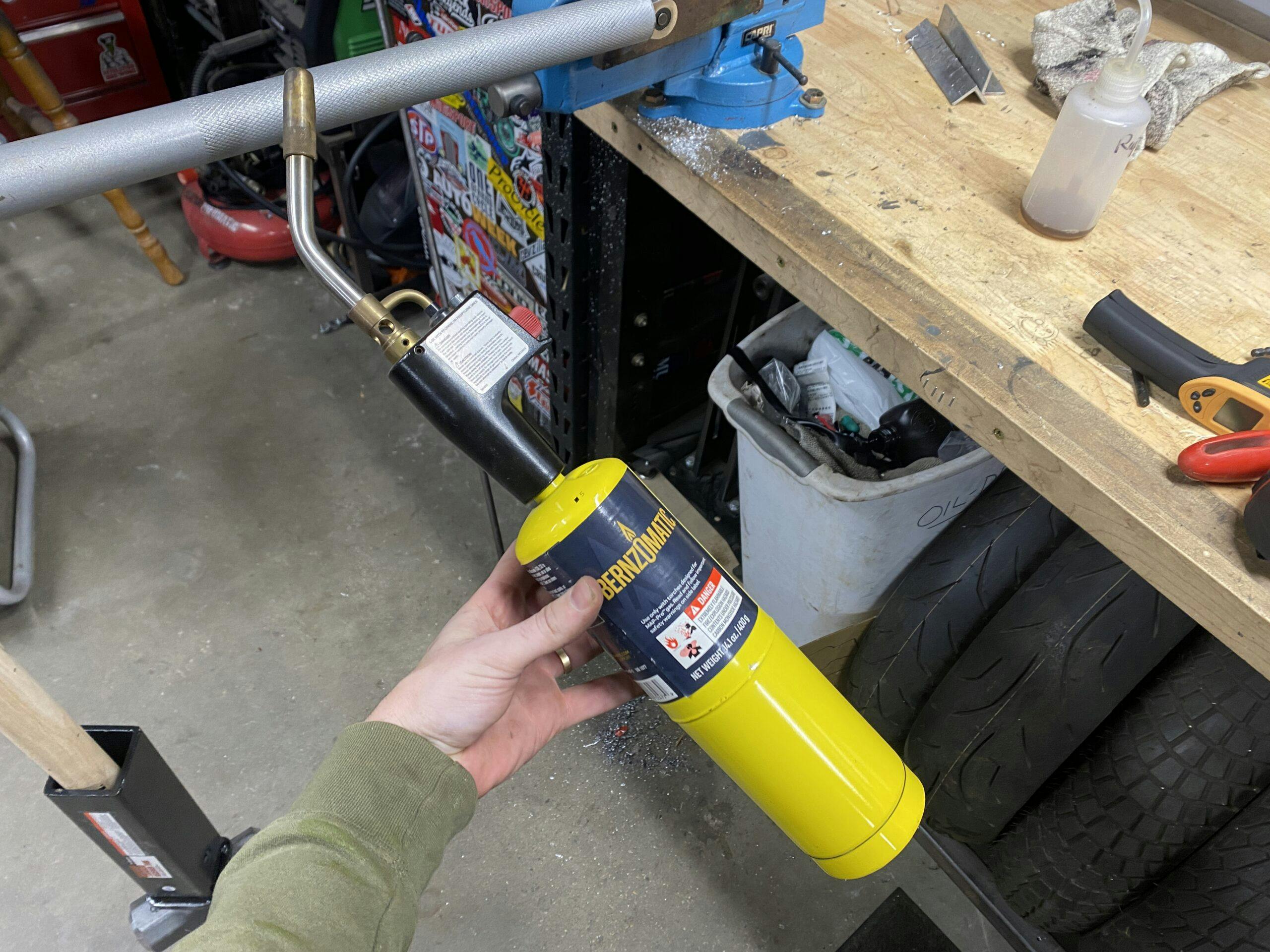

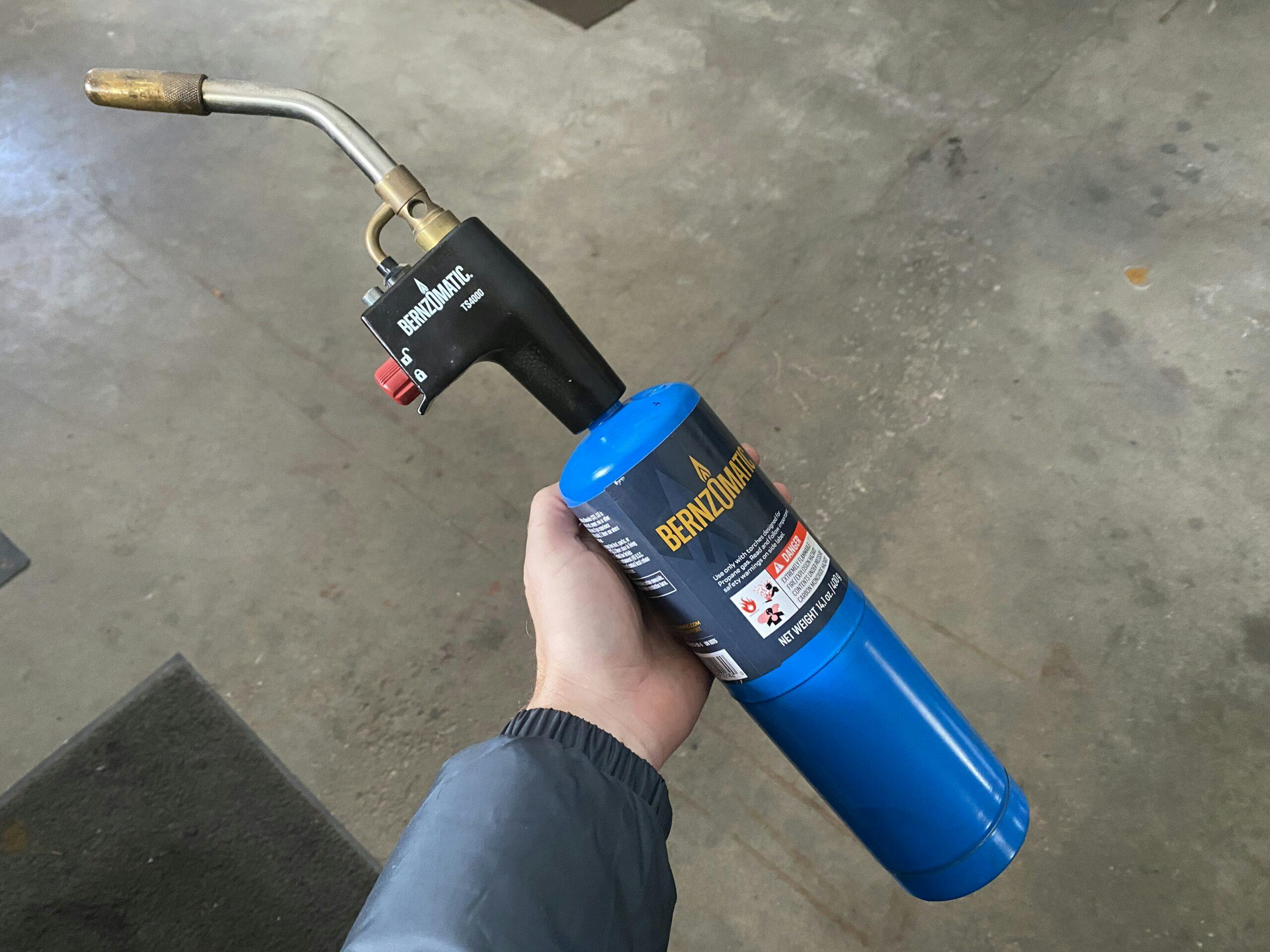


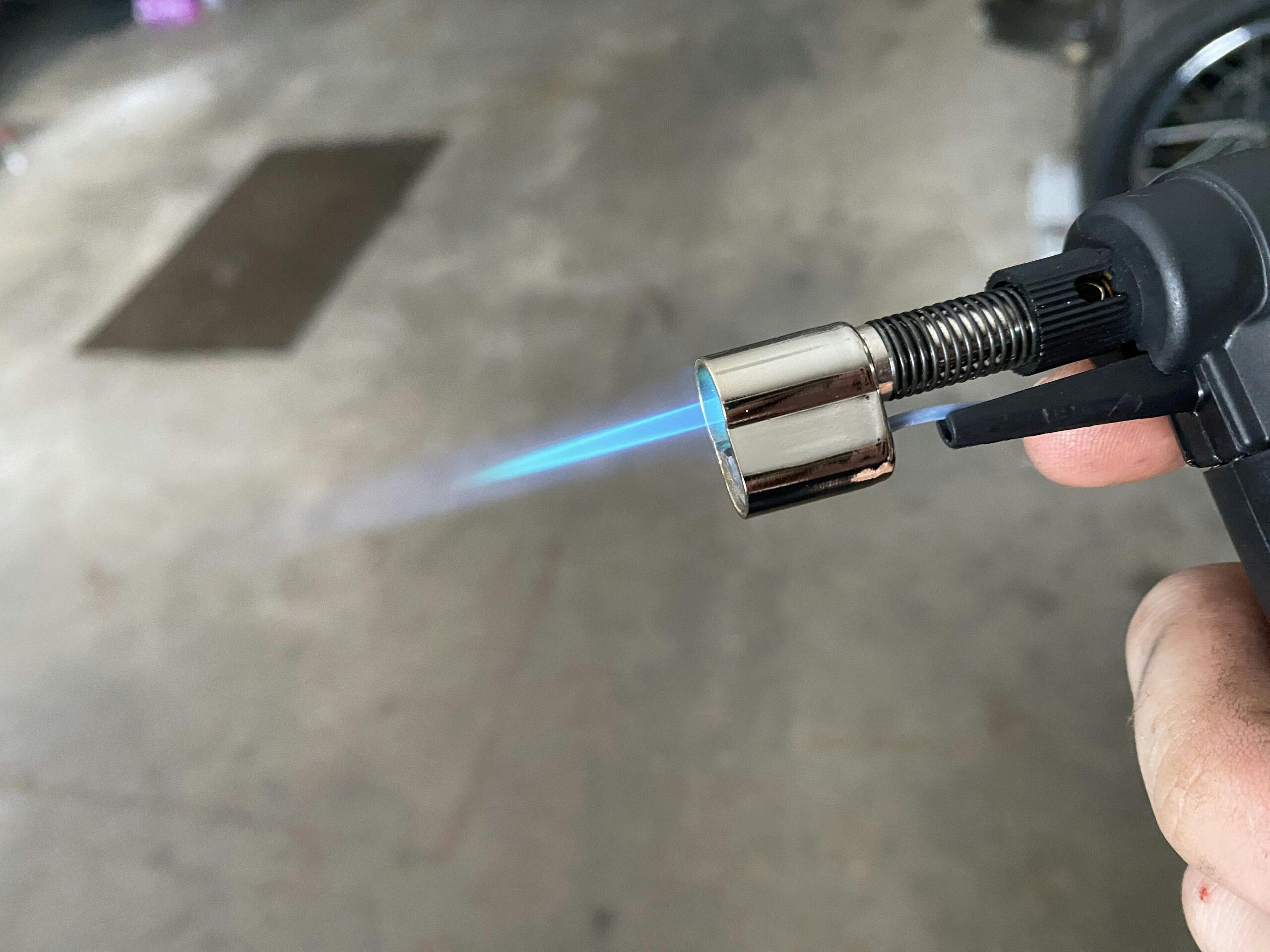
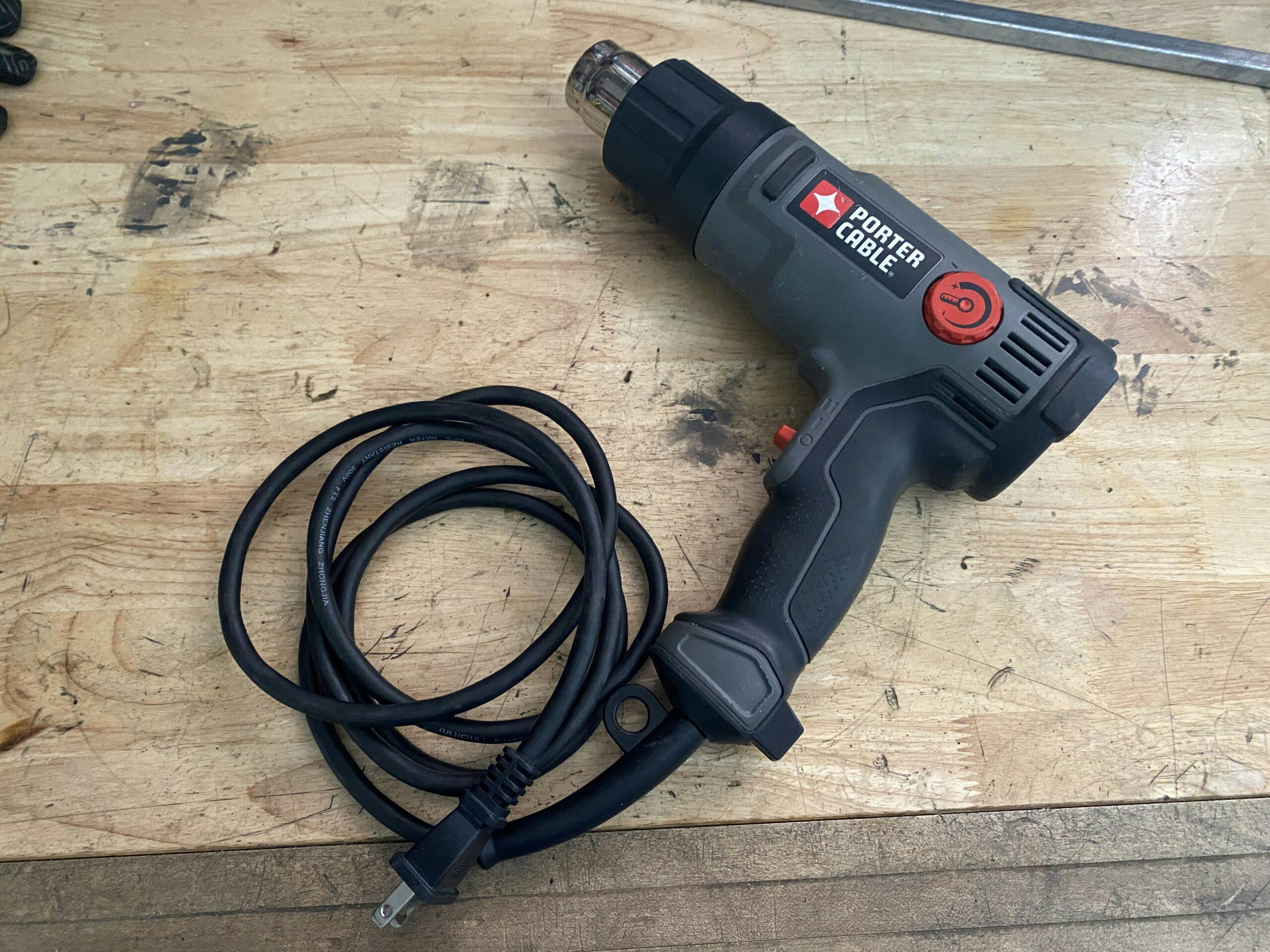
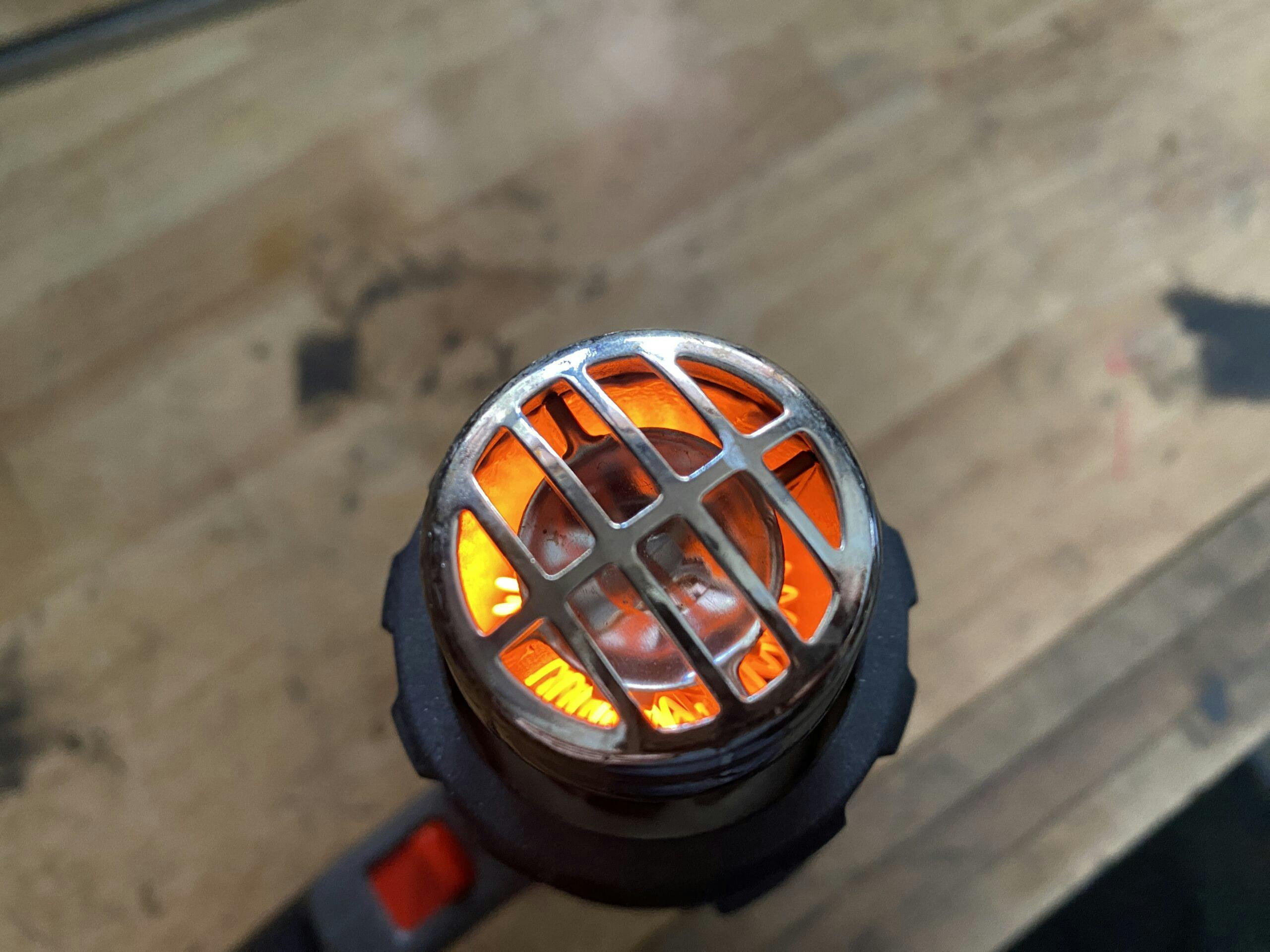
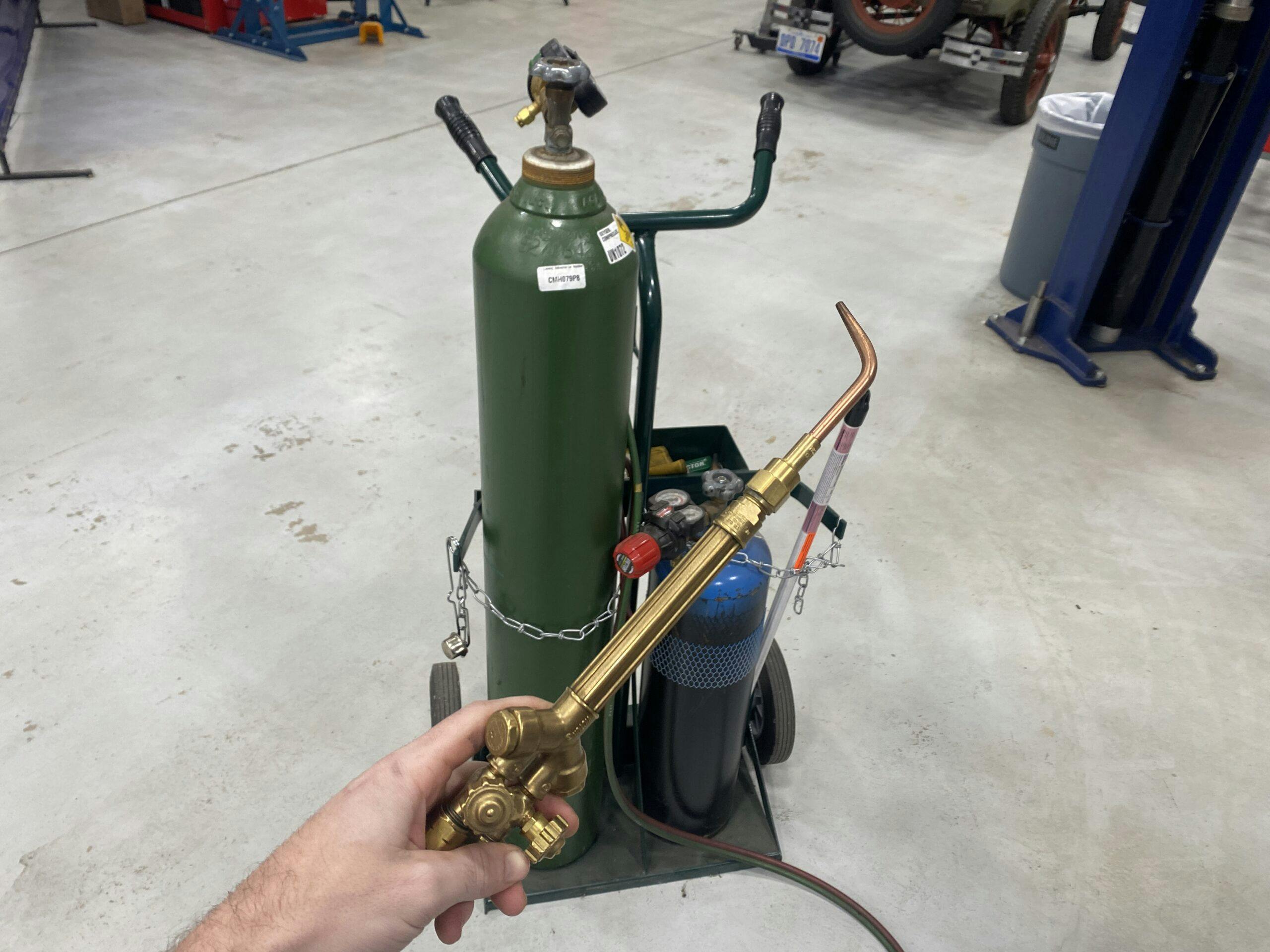



One interesting result is that by using the correct tool (oxyacetalene torch) you also minimize the heating of the major component compared to some of the other less efficient options.
I think one factor that needs to be considered for the general stuck bolt issue is why is it stuck. Did you just booger the head up or snap it off? is it corroded/seized? is it cross-threaded? If it’s cross-threaded or severely seized, don’t waste time with the heat and go straight for the drill and tap.
You are very right. I have been spitballing ideas for how to duplicate a stuck or rounded bolt consistently with a few friends. Would love to test methods for removing rounded hardware with a similar test. We might have something but a few trial runs are required.
I would try using a hex head allen (or torx) flange bolt. You could grind off the hex corners to simulate rounding then still torque it into the test plate using an allen key.
Maybe a soldering pencil or gun test vs induction heaters in your next article!
Those are two top suggestions thus far!
This of course will demonstrate the phillips fasteners best function….as a drill center.
Ever try to remove a large old bronze threaded plug out of a cast aluminum body such as a gear box drain plug? I tried by heating heating it with a propane torch. To my frustration it got even tighter because the heat made the aluminum expand faster than the plug. I removed the cast aluminum cover and I took it to an old time welder friend. He said no problem. He got a bucket of cold water with some ice in it. Heated the plug and the area around it. Then put it in the ice water for several seconds. I could then unscrew the bronze plug by hand.
I think this would make an excellent Project Farm video. It would be interesting to see how the results change given a tight space with fragile neighbors or relatively open space with only hearty materials nearby. If you’re wondering how a tool or product works in relation to similar tools or products, that YouTube channel is a good source of unbiased information.
Have you done any tests concerning the best penetrating oil to help remove stuck nuts and bolts (i.e. WD-40, PB Blaster, Liquid Wrench, etc.)?
I have not (yet.) Still need to devise something to consistently corrode a number of bolts. Maybe a saltwater bath? I would really love to put numbers to the efficacy of some penetrating oils–including homebrew solutions.
Funny that you mention home brew solutions. I once read a university technical bulletin that indicated that their test revealed that the best penetrating oil was a home brew of 50% plain old Automatic Transmission Fluid and 50% Acetone. I tried it on some 9-year old muffler clamp bolts. I was able to remove every bolt.
That’s the exact solution I had in mind actually. I’ve heard it for years but never had the stuff on hand (along with a third container to store it for future use) all on hand at the same time. It also seemed messier than other options? What did you use to apply it to the hardware? A brush?
I have read that once mixed it will not keep so you must mix for each use
Kano Kroil is another good penetrant. (“Don’t spoil it, Kroil it”) I used it in the aviation maintenance industry for many years when heat was not an option. I would estimate a 90% success rate. I always suspected it is mostly ATF.
Nope, a WD-40 hand pump spray bottle. You know, the kind you buy when you buy WD-40 by the gallon. That way, you don’t have to worry about the acetone evaporating (well, at least not as fast as an open container). You do have to be careful with overspray and drips though.
I use plastic transfer pipettes for years with this home brew.
I made the 50/50 mixture and put it in a spray bottle. Using it to get rusted bolts off a 1977 Porsche 924 project car
Fluidfilm or Kroil?
Looks like Project Farm already tested lubricants (apologies if this already posted)
https://youtu.be/xUEob2oAKVs
Liquid wrench being the winner.
You need some Iowa DOT salt brine that is sprayed on our state highways. Super corrosive.
I wonder if they would sell me some…Haha
Add Spray Nine to your penetrating ‘substance’ list – I used it many times as a Diesel mechanic
I worked in an industrial setting for many years. Kroil was the penetrant of choice. Recently I tried some WD40 penetrating lube and it seems to be among the best in my experience. I had always used PB Blaster
I have read that WD40 is not by design a penetrant. It is a lubricant and moisture remover, no more no less. I use PB Blaster with good success.
I had heard WD40 stands for Water Displacement/ 40 days. Think there is any merit to that?
Correct on the WD part – the 40 signifies the 40th combination tested during development
Water displacement formula 40. Project bought and paid for by U.S. Dept. of Defense. WWII era.
You beat me to it
I had heard that it stands for water displacement – 40th try
Check out the “Project Farm” YouTube channel. Todd has devised some pretty ingenious testing methods and does it all without being sponsored by the manufacturers. (He’s worth supporting on Patreon.) He’s already tested many chemicals and tools. Definitely my Sunday morning “go to” video!
Whiplash,
The best penetrating fluid is a 50-50 blend of transmission fluid and acetone. A friend tested it and said that it was better than any you could buy.
BERT
No mention of induction heaters? I’m not going to name any brands because I haven’t tried any, but there are various price levels of electric heaters that use an induction coil to heat bolts. They can be used a little closer to plastic or other heat sensitive materials as compared to an open flame. It’s probably the next tool I need on my journey to being a professional mechanic, but I’ve done fine with the torch so far.
My thought exactly. Induction coil as heat is not spread around, rather it is localized and can more precisely target an area. Downside is that it does not seem to penetrate too far. If the area needed to free up is close to the surface the induction coil might be the way to go. Another downside is their cost. Also if you got the swing room a well placed strike with a blunt object sometimes cracks the corrosion. As an earlier poster said depends on where and what the issue is with the stuck bolt.
I was interested in adding one but was unable to alter the test to allow it to be fairly compared here. Induction heaters are a very handy tool, though many home users are scared off by the price tag. Davin has used one in the past on some Redline Rebuild projects and had good things to say. I personally question the versatility but that might be pure ignorance on my part.
Induction heating is fantastic. I bought one from Amazon along with a couple of free form elements.
I think it was about $270 total. If you value your own time, it’s easy to justify the cost. It’s great when you don’t want open flames. Stuck bolts around the gas tank, anybody?
I used it on some sway bar end links that had rusted solid. With about a minute of applying the induction heater, they zipped off.
A friend had a stuck locking nut on an axle (spec’d at 250 ft-lbs torque to tighten but probably applied with extra ugga-duggas). I wrapped a free form element around the outer part of the control arm and applied the induction heater for about two minutes. It broke free with little effort.
I haven’t tried it in an application where I need a lot of penetration, so I can’t talk to that. A known limitation is that it works on ferrous materials. Also there is a limited duty cycle (mine is 2 minutes) so if you need even more heat, you might want to do a combo of starting with the induction and swapping over to a different method.
Considering the difference between a 10 minute job and a 5 hour ordeal can be a broken bolt, the induction heater can be money in the bank.
AND when I bought an induction heater for my shop in Michigan (where I think RUST was invented) – I found that I was almost no longer using the torch at all. Nice side benefit was I no longer melted rubber and plastic components in the area I was working. Certainly worth consideration… And I think your friend might have had success in that steering column with a soldering gun! Very localized heat.
You missed a big one- magnetic induction heater. Prevents a lot of unwanted heat and no open flame.
and you can borrow one from Davin.
Kano Kroil is another good penetrant. (“Don’t spoil it, Kroil it”) I used it in the aviation maintenance industry for many years when heat was not an option. I would estimate a 90% success rate. I always suspected it is mostly ATF.
I wonder if that would dissolve Loctite? I know some compounds will, but haven’t tried it firsthand.
One thing that bears mentioning when dealing with fasteners ‘in situ’, like under a dashboard – aluminum foil is your friend. Shield everything (like wiring and trim) that you can, then get in and get out fast with as much quick, localized heat as you can muster.
Yes! Aluminum foil is a great heat shield that can be worked into a lot of odd nooks and crannies.
It’s also really useful for masking off oddly shaped objects when spray painting–much better than paper and masking tape. Saran Wrap is also good for this…
Mini Ductor induction heater – worth every penny! Can be used in tight spaces without worry of heat damage/danger (like heating hardware near fuel lines)
Great article, Kyle — thanks for this! I mode of operation is usually to snap off the bolt and then have my vehicle towed to a mechanic I know who doesn’t make fun of my lack of knowledge :-)) The information you gave in this article is something that might keep my project off of the tow truck!!
steve
As a long time Heavy Equipment mechanic, I’m no stranger to corroded stuck and cross threaded bolts
oxy acetylene concentrated on the bolt head until red, let it cool to shrink while the surrounding metal is still warm and it’ll usually back right out
Here’s something I’ve often wondered about. Is the success of applying heat a result of softening the threads on the stuck fastener, or a result of the heat-induced expansion of the threaded hole it is embedded in? If the former, then heating the fastener makes sense. If the latter, then is it better to heat the area surrounding the threaded hole? Especially considering that softening the fastener increases the risk of twisting off the head.
I suspect that part of it (ideally) is heating the outer thing faster than the inner thing to create some clearance, combined with the differential heating process breaking the corrosion layer in between them
Bob Villa posted a method for rusting steel. 1. Put the bolts outside on a hot day. 2. Scuff them up to remove any protective coating. 3. Spray them with white vinegar and wait 5-10 minutes. 4. Apply a mix of 2 cups hydrogen peroxide, 4 tablespoons vinegar, and 1.5 teaspoons of salt. Apply with a spray bottle. Let dry at least 5 minutes.
Repeat this as desired.
If space allows, and you have one, possibly try an old fashioned large electric soldering iron pressed to the head of the bolt. No flame and the heater is transfered by conduction thus keeping the heat away from other objects.
Interesting idea! I can’t say I would have come with that myself.
Being from a super rust-belt state, I learned early in my wrenching career to use Oxy/Accet, known as the “Blue-wrench”. Quick, but dangerous! Be careful.
We called it the FIRE WRENCH. Similar idea…
I like the performance of that kitchen torch. The lowest heat in the surrounding area and a decent performance time. Think I’ll add one to my arsenal – dragging the oxy out for everything is a pain.